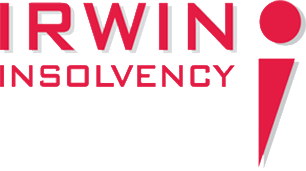A company voluntary arrangement (CVA) could be a lifeline if your UK business is overburdened with debt but has the potential to be profitable again.
This legally binding agreement between a company and its creditors sets out a realistic debt repayment plan.
It also gives companies the opportunity to streamline their structure and operations. With a voluntary arrangement, directors can weather the storm and steer their business back to success.
A director, administrator or liquidator may suggest implementing a corporate voluntary arrangement – but from that point onwards, expert support is required.
A company voluntary arrangement must be set up and managed by a licensed insolvency practitioner (IP).
That’s where Irwin Insolvency comes in – we have more than 25 years’ experience of corporate recovery.
Why not contact us today to discuss your firm’s circumstances?
Eligibility for a Company Voluntary Arrangement
To be eligible for a company voluntary arrangement, your business needs to be:
- A limited company/limited liability partnership (sole traders should consider an individual voluntary arrangement instead)
- Insolvent/contingently insolvent, but viable and underpinned by sound business practices
- Able to demonstrate clear, accurate financial reporting and make reasonable monthly repayments
A voluntary arrangement covers unsecured debts such as HMRC tax bills, loans, corporate credit card bills, lease payments and supplier invoices. CVAs aren’t for secured debts such as mortgages or hire purchase agreements, so negotiate separately with secured creditors.
How a CVA Works – Step by Step
Implementing a corporate voluntary arrangement usually takes six to eight weeks. The key steps include:
- The company instructs an insolvency practitioner (IP) to assess its suitability for a voluntary arrangement based on its circumstances and creditors
- If the IP is satisfied the firm is viable and a good candidate for a CVA, they review its financial position, including assets, liabilities, creditors, debts and cash flow forecasts. As nominee, they create a robust company voluntary arrangement proposal, outlining a long-term repayment plan covering 20 to 100 per cent of the debt
- The IP shares the corporate voluntary arrangement proposal with the court and creditors. Dates are set for creditors’ and shareholders’ meetings
- At their meeting, creditors may query or suggest changes to the proposal. For it to be approved, at least 75 per cent of creditors (by unsecured debt value) and at least 50 per cent of shareholders must vote for it
- After the proposal is approved, the company voluntary arrangement takes effect with the IP as supervisor. The company makes monthly repayments and, under the IP’s guidance, becomes more efficient. For example, it may terminate certain leases or contracts – often at no cost, thanks to the IP’s expertise
The IP charges nominee and supervisor fees, but CVAs are nevertheless among the most affordable corporate insolvency options.
Company Voluntary Arrangement Benefits
There are compelling reasons why a voluntary arrangement is beneficial:
- The company continues trading and directors retain control
- The corporate voluntary arrangement isn’t announced publicly
- Debts are consolidated and interest is normally frozen
- Unsecured creditors can’t pursue legal action such as winding-up orders
- The company cuts costs and boosts cash flow by improving the way it works
Moreover, a voluntary arrangement is less drastic than administration (which may stop the company trading) or liquidation (which dissolves it).
Company Voluntary Arrangement Advantages
- Directors can focus on corporate recovery
- Negative publicity is avoided
- No court hearings unless creditors challenge the voluntary arrangement
- Trading with creditors is possible
Company Voluntary Arrangement Disadvantages
- Secured creditors aren’t bound by the corporate voluntary arrangement
- It’s recorded at Companies House, appears on the company’s credit record and damages its credit rating
- Some assets may need to be sold
Company Voluntary Arrangement FAQs
What happens after a corporate voluntary arrangement is approved?
Once a company voluntary arrangement is set in motion, unsecured creditors’ legal action ceases. The company makes monthly repayments to the insolvency practitioner, who divides funds proportionally among creditors.
How long does a company voluntary arrangement last?
A CVA typically lasts three to five years – it’s a long-term commitment for the company and creditors. The IP will manage the voluntary arrangement throughout this time.
What are the pros and cons of a CVA?
For a balanced view of company voluntary arrangements, consider the following.
Can companies survive after a CVA?
Absolutely – successfully completing a CVA gives a business every chance of long-term survival. The firm will have cleared the debt and be working more cost-effectively, so it’ll be in a better position to overcome challenges.
Need a CVA? Contact Irwin Insolvency
If your company is heavily in debt but has the ability to pull through, a UK company voluntary arrangement could set it on the path to recovery.
Our expert insolvency practitioners are ready to help you arrange a CVA – call 0800 254 5122 today.
Get in Touch
With over 25 years of experience, helping people just like you, we are committed to providing you with all the help and advice you need during these challenging times. Simply give us a call, drop us an email or fill in the form to find out how we can help you.
Our Office
Irwin & Company,
Station House,
Midland Drive,
Sutton Coldfield,
West Midlands B72 1TU
Call us
0800 254 5122
Email us
[javascript protected email address]
Fill in the form below and a member of our expert team will be in touch to discuss how we can help you.
"*" indicates required fields

